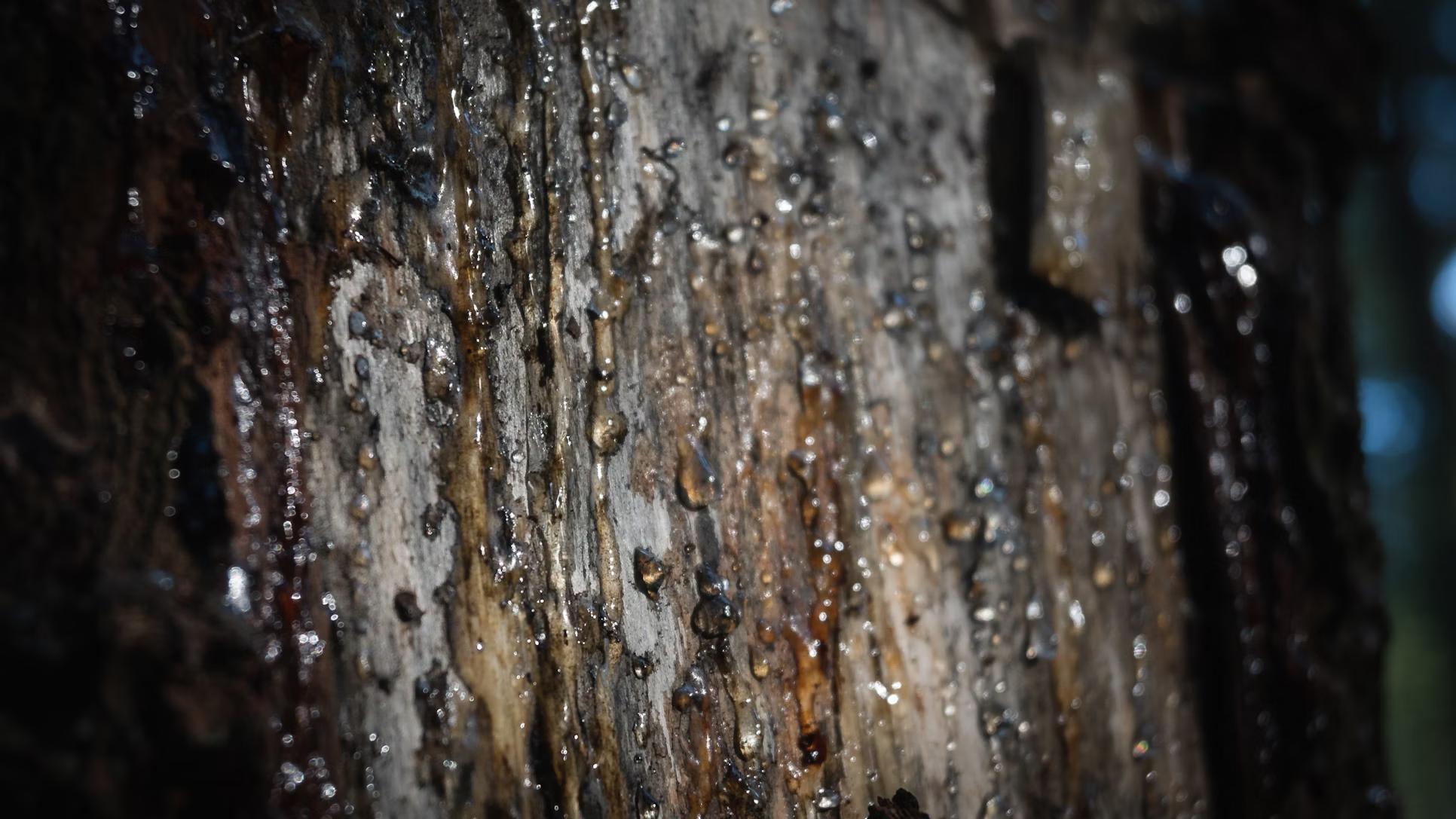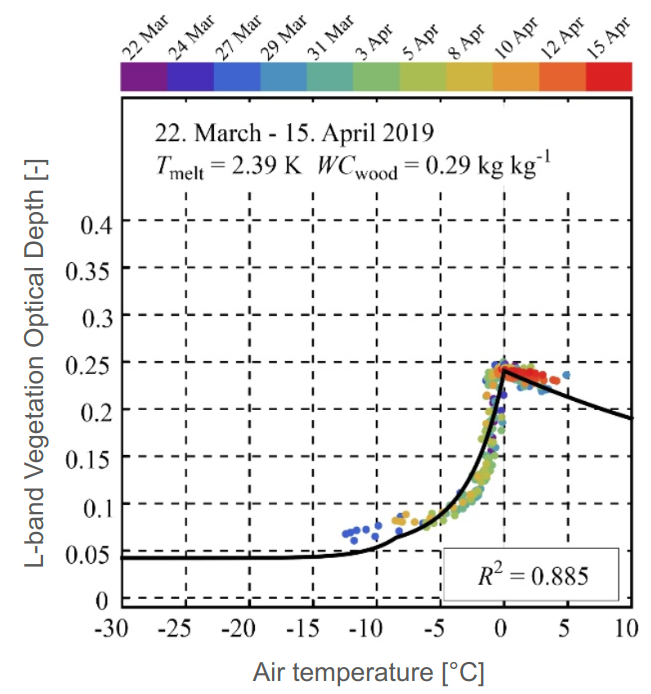
A new study expands on previous findings from the Sodankylä region of Finland (2019), where a model linking temperature and observations of L-band Vegetation Optical Depth (L-VOD, the extinction of microwaves in vegetation) has been developed. This “L-VOD model” has been updated to account for the conservation of salt in freezing sap-water, and it has been applied to the 2011-2022 L-VOD of the boreal forest belt derived from SMOS Brightness Temperatures.
“Results show that the significant decrease in L-VOD caused by the freezing of sap water is not limited to the forests surrounding Sodankylä, but extends to the entire global boreal forest belt”, explained M. Schwank, researcher at the WLS, during a presentation in Toulouse.
As illustrated in the following figure, the vegetation optical depth peaks when vegetation temperatures reach 0°C, and decreases as temperatures deviate from this point. Sub-zero temperatures reduce L-VOD by freezing sap-water, and this finding underscores the importance of accounting for these reductions when estimating the Above-Ground Biomass of boreal forests from L-VOD.

Characteristic temperature dependencies of L-VOD resulting from freezing sap water (electromagnetic reason). Colored data are L-VOD derived from Brightness Temperatures measured at the Sodankylä forest site during the 4-weeks warming period of 2019. The black line shows L-VOD simulated with the “L-VOD model” considering the optimized key parameters T melt (the number of degrees below 0°C at which sap water melts) and WC wood (the water-content of wooden branches).
Much more information on the recently published article : here !
